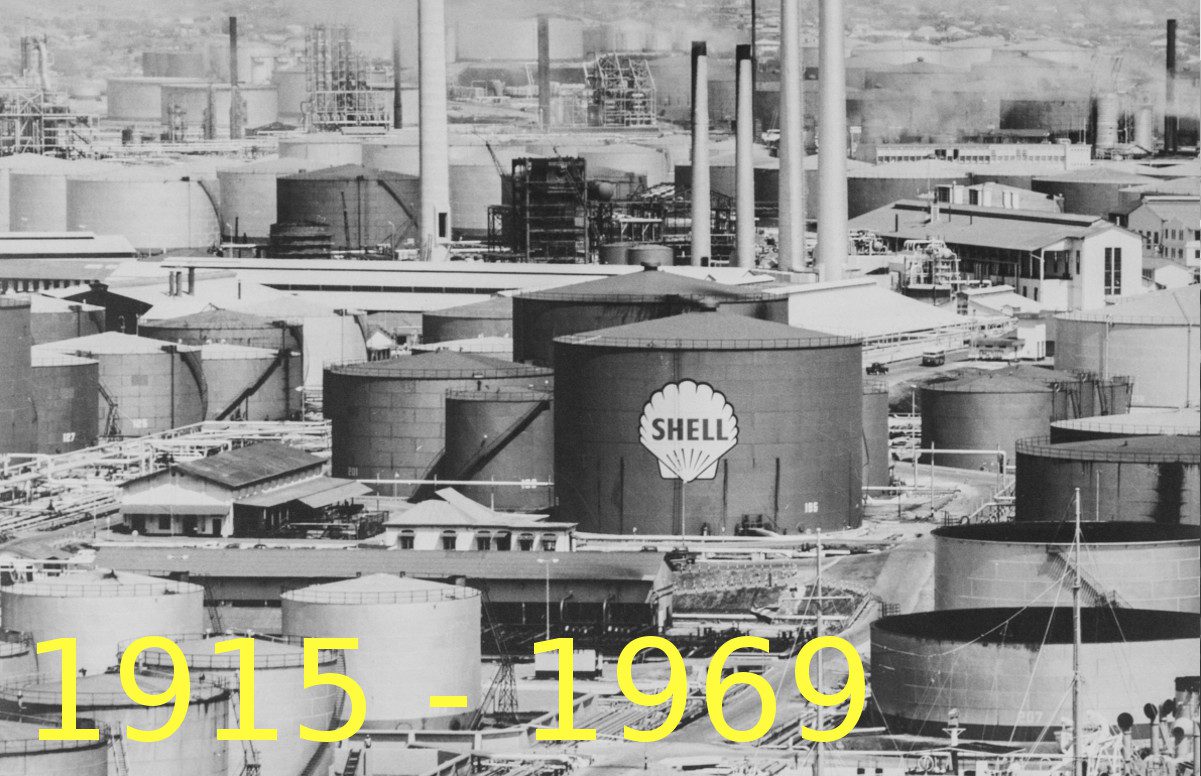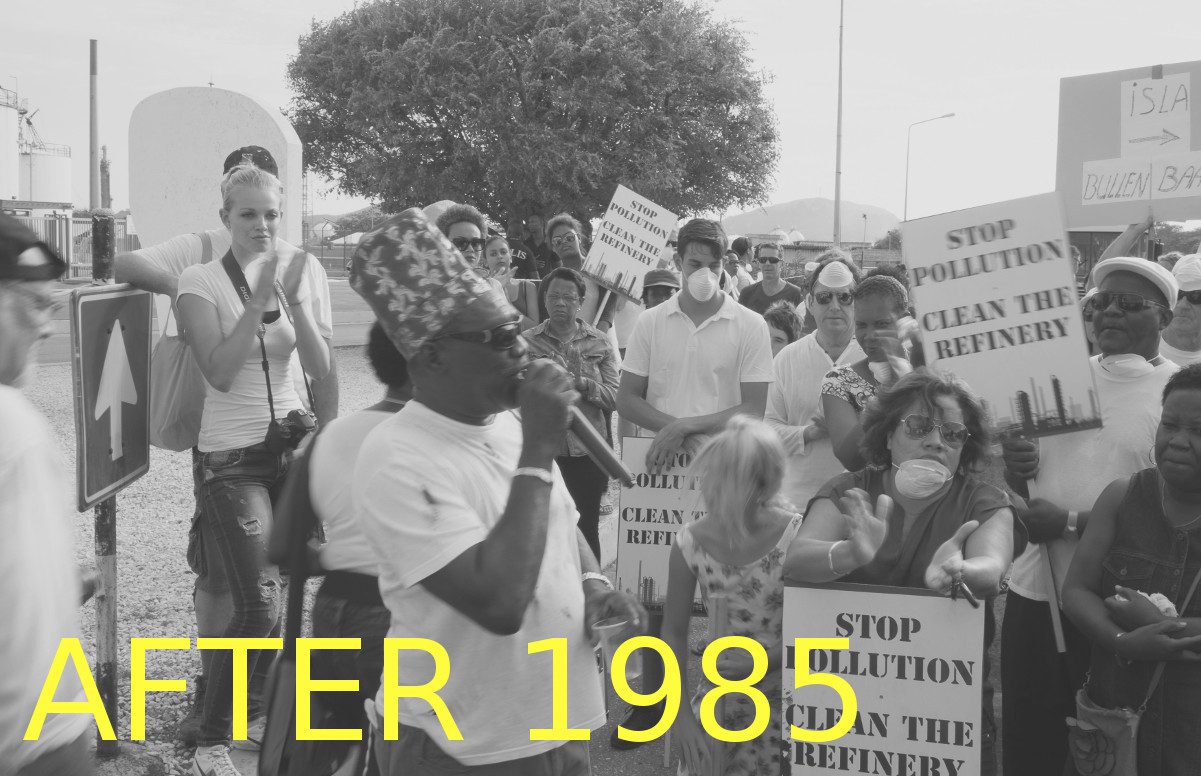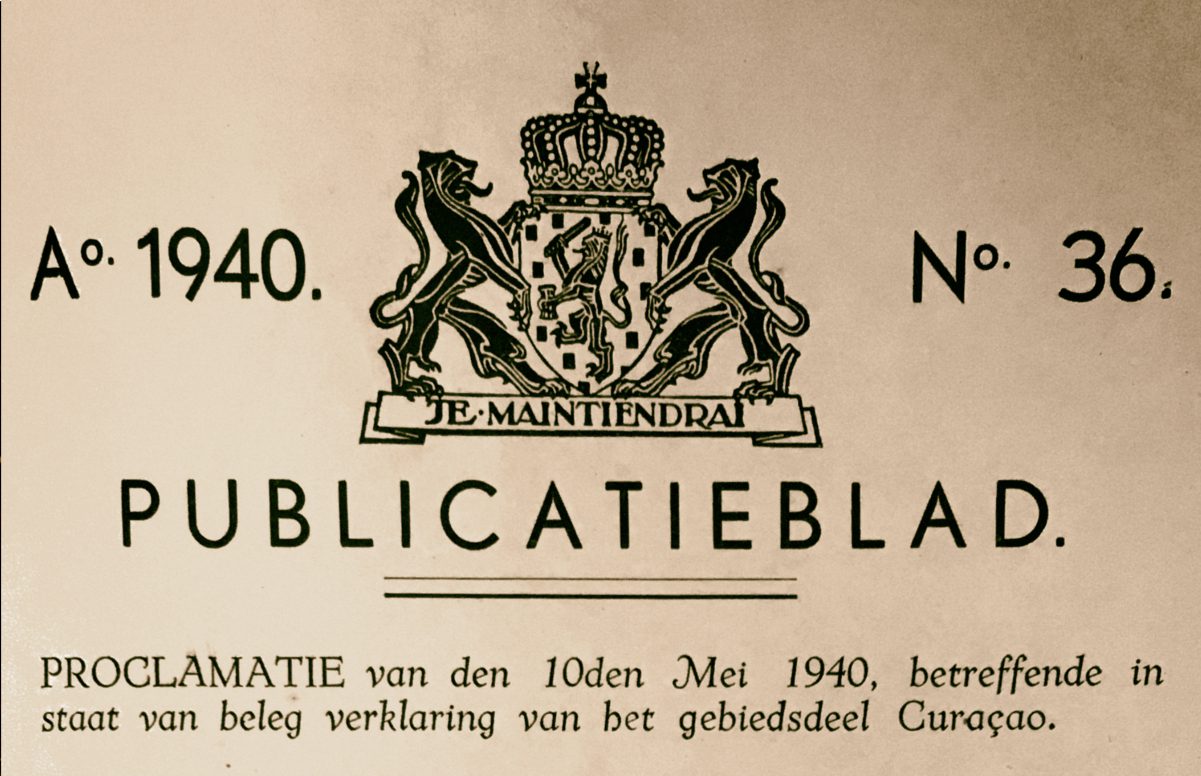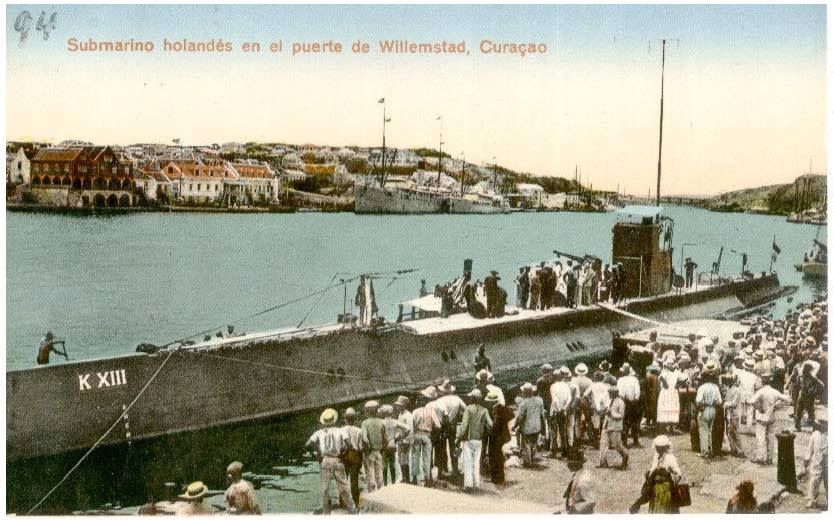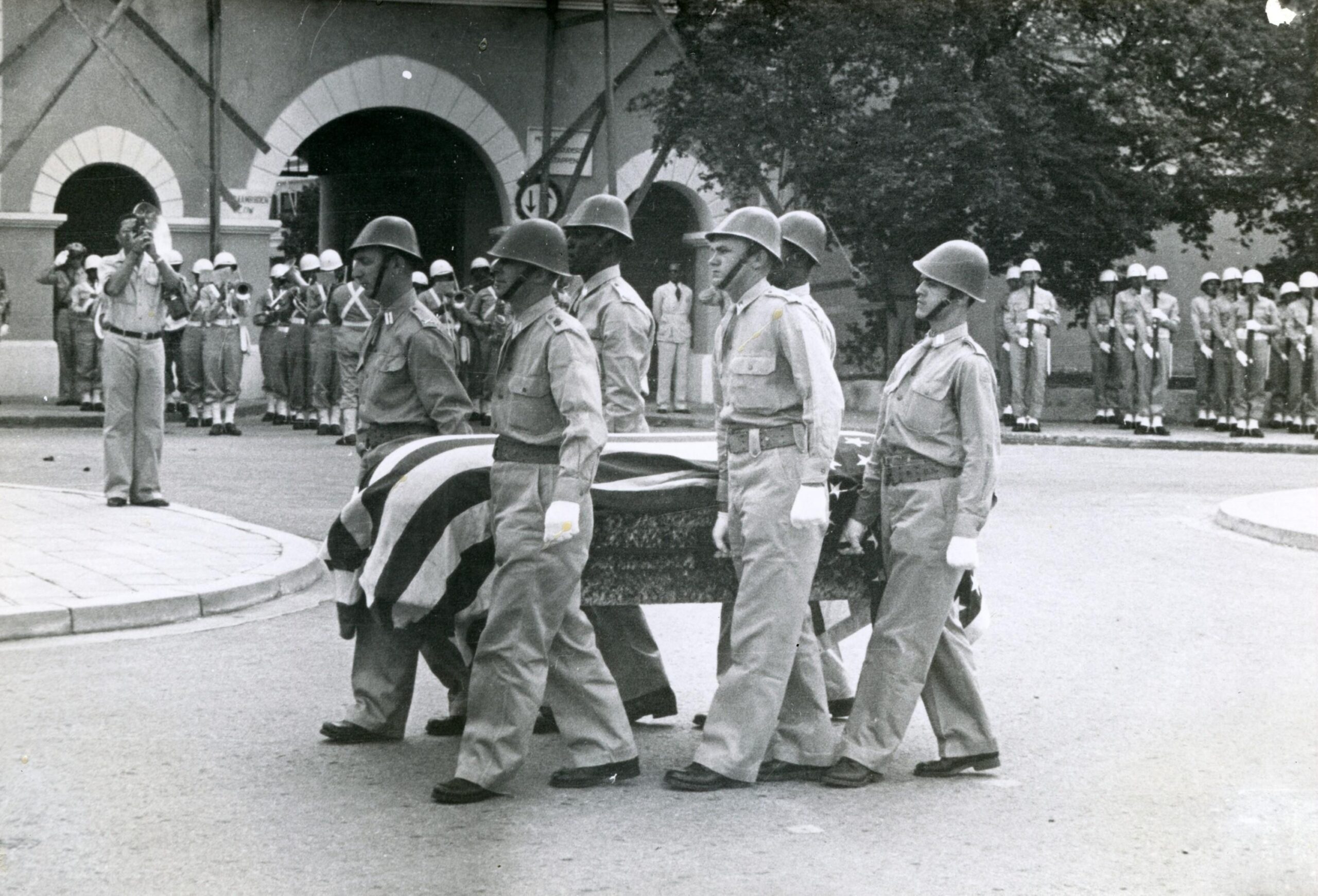
Isla den Nos Bida
100 years Refinery in Curaçao – 100 aña Refineria na Kòrsou
Exhibition
1915 – 1969
While chaos and destruction ravaged Europe, Northern Africa and parts of Asia, World War II was a glorious time for CPIM. To fuel the war effort, the refinery produced kerosene for bomber planes to execute their devastating missions. In 1941 no less than 85% of the kerosene for the Allied forces (Great Britain, the Netherlands, Belgium, the Soviet Union, most Scandinavian countries and eventually the United States of America) was refined on Curaçao and Aruba. 100% of the fuel used to fight against the Axis powers (Germany, Italy and Japan) in Northern Africa in 1942 and 1943 came out of Curaçao. From 1943 on, production of kerosine reached such a high level that a special area, the so-called Asphalt Lake, had to be created and filled with half a million cubic meters of asphalt and 50.000 tons acid tar by-product CPIM wasn’t able to dispose of elsewhere.
Due to the war, exporting refined fuel from the refinery was dangerous. In mid-1940 tankers Lucretia and Leticia were bombed on route to England. On February 11th, 1942 some 1.400 American soldiers arrived to guard the refinery. They replaced a contingency of British soldiers, who were initially stationed on the island. On February16th, 1942 the CSM-tanker Rafaela was torpedoed by a German submarine right in front of the Curaçaoan harbor. This incident alerted all involved that World War II had now reached Curacao.
As a result, the refinery did not run on high capacity. A drop in oil supply was triggered by torpedo attacks on crude oil tankers from Venezuela. Tankers could only sail at night as a part of larger convoys. On CSM-tankers 300 -mostly Dutch- officers and an equal number of Chinese sailors were obligated to work as a part of the war duty. Yet these ships lacked life saving equipment. The Chinese sailors protested and demanded higher wages to compensate the dangers of the war.
They were eventually joined by some Dutch officers. When the colonial governor Wouters and the CPIM/CSM director noticed the officers involvement, a mediation committee was appointed to level out the differences. The Chinese sailors, however, were not Wouters’ concern. They were interned in a camp guarded by CPIM personnel in Suffisant. On April 20th, 1942 the situation came to a head and fifteen Chinese protesters were killed. Afterwards, governor Wouters reported to the Minister of Colonial Affairs in London that “the Chinese were completely and utterly to blame” for their own deaths. Eventually Wouters was forced to resign because of his poor judgment.
Where the Germans refueled their submarines to wage war in the Caribbean region remained a mystery. A stringent export control was instituted to prevent any ‘trading with the enemy’. Yet the system wasn’t water proof. After the war, questions also rose about the refinery itself and why it had never become a target. “Who knows,” author J. van der Walle noted years later, “maybe Deterding (Shell director and known Nazi sympathizer) made a deal with Hitler after all…”


